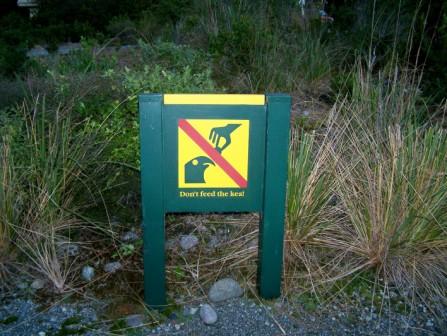You can contact LEARNZ, part of CORE Education, at:
Postal Address:
PO Box 13 678,
Christchurch 8141,
New Zealand
Kea are curious and intelligent and this has led to problems between kea and people.

Kea are unusual in that they actively seek out and interact with people and their property. This curiosity and love of new things has led to problems between kea and people.
Although kea are now fully protected under the Wildlife Act, their behaviour often results in destruction of human property and as a result they are considered a nuisance in areas where they cross over with people. Kea deaths caused by people are recorded each year.

The Department of Conservation (DOC) and the Kea Conservation Trust (KCT) receive reports of problems with kea regularly, but more conflicts may go unreported as people deal with the situation illegally.
If dead kea are found they are sent to Massey University to find out how they died. Often the cause of death is found to be from shotgun injuries, blunt trauma or poisoning.
In past conflict situations, kea have been relocated by the KCT or DOC to other areas, or in serious situations where kea are injuring stock, DOC has issued permits to legally kill kea. Neither of these responses to conflict are sustainable and as such have been discontinued while other more positive long term solutions to conflict are trialled.
The two main reasons for on-going human-kea conflict are:
The Kea Conservation Trust is working with DOC and communities to try and resolve these issues by designing programmes to identify the problems and possible solutions.

Conflict between kea and New Zealand high country sheep farmers was first recorded in Wanaka during the late 1860’s. Sheep losses were caused by kea attacks and in an effort to “fix” the kea problem on high country runs, the government set up a bounty system for kea. Bounties reached as high as £1 per kea (equivalent to $120 today) and it is estimated that 150,000 kea were killed before the bounty was removed in 1970.
Kea are now fully protected and anyone who kills a kea can be fined up to $100,000.
Complete the Conflict between kea and people quiz >
Rubbish bins in alpine villages and on ski fields can be targeted by kea: Design a 'kea proof' rubbish bin for use in these areas.